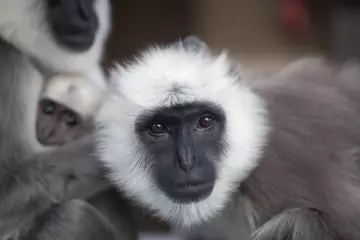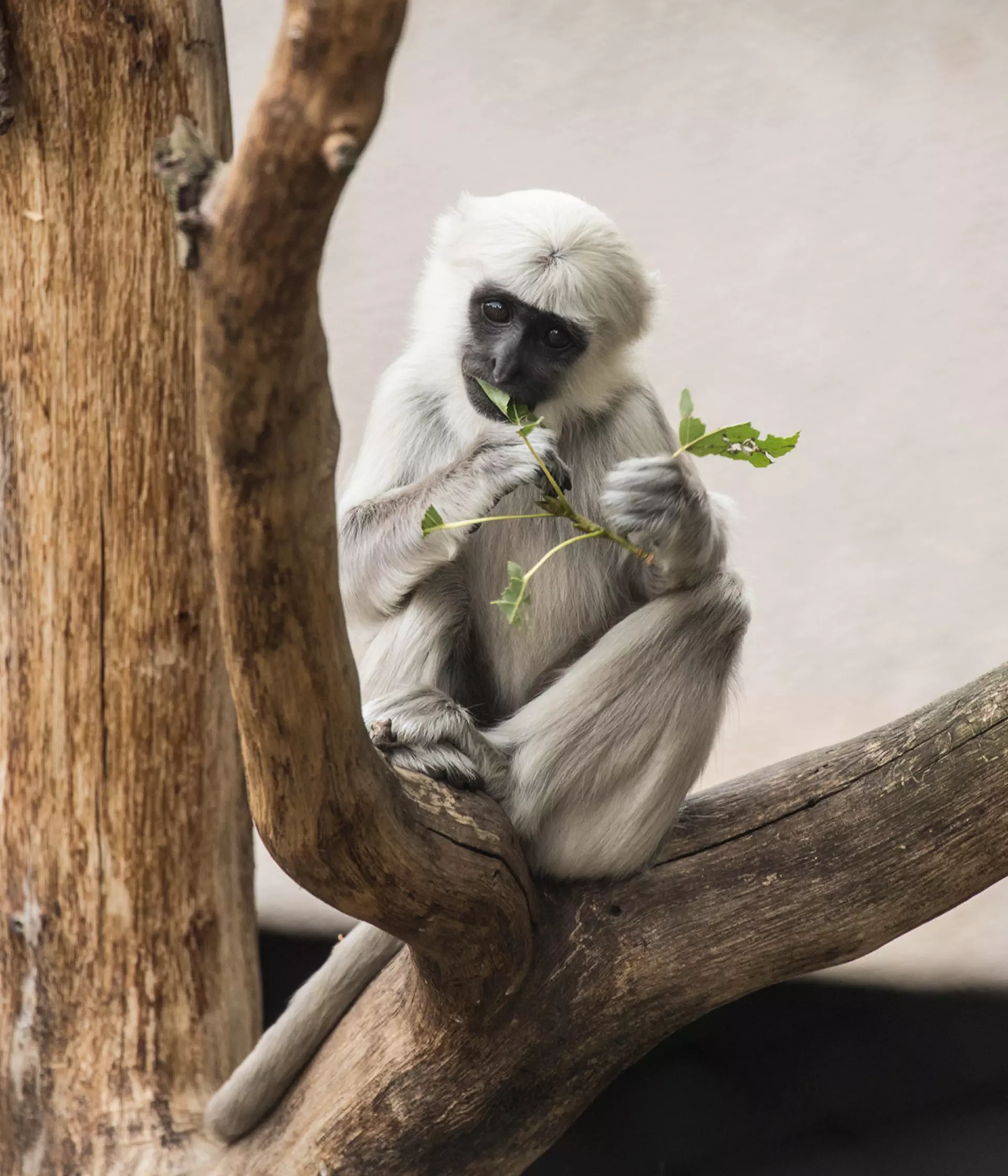

What primates will I see at London Zoo?
London Zoo is home to a variety of species of primate from around the world, including a family of Hanuman langurs - also known as northern plains grey langurs - who can be found in Land of the Lions in the Zoo's orange zone.
Hanuman langurs are one of seven species of langur spread across Asia. They are named after the Hindu god, Hanuman, the deity of healing and worship, who is often depicted as part-man, part-monkey.
What do Hanuman langurs look like?
Hanuman langurs are large furry primates that are mainly grey in colour, with black faces and ears.
What do Hanuman langurs eat?
Mainly herbivores, their wide-ranging diet consists of leaves, shrubs, shoots, roots, fruit and seeds, to name a few! They also eat spider webs, termite mounds and insect larvae.
At the Zoo, our langurs have plenty of variety in their diet - they absolutely love sweet potato and beetroot.
What threats do Hanuman langurs face in the wild?
Hanuman langurs face a number of threats from activities such as mining and firewood collection, as well as habitat loss and urbanisation.
Visit our Hanuman langurs at London Zoo
Book your London Zoo ticket today
- Did you know, langurs can leap up to five metres?
- Langurs are very vocal animals, having as many as 19 different types of call for different occasions, from whoopping when they're happy to barking if they're surprised by a predator.
